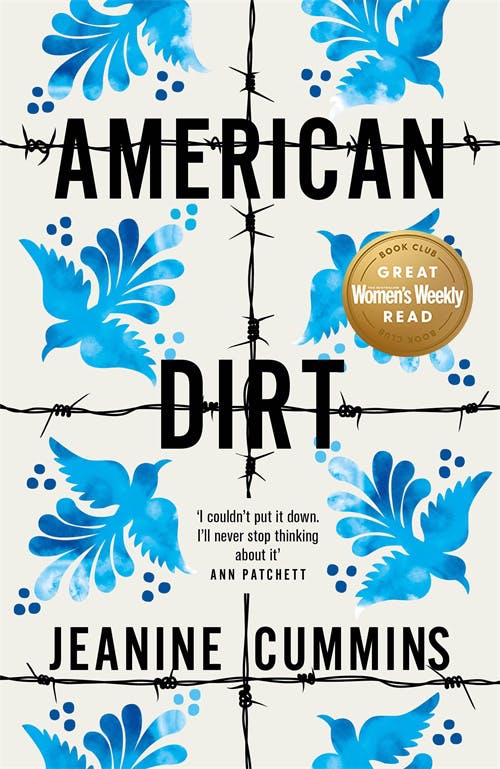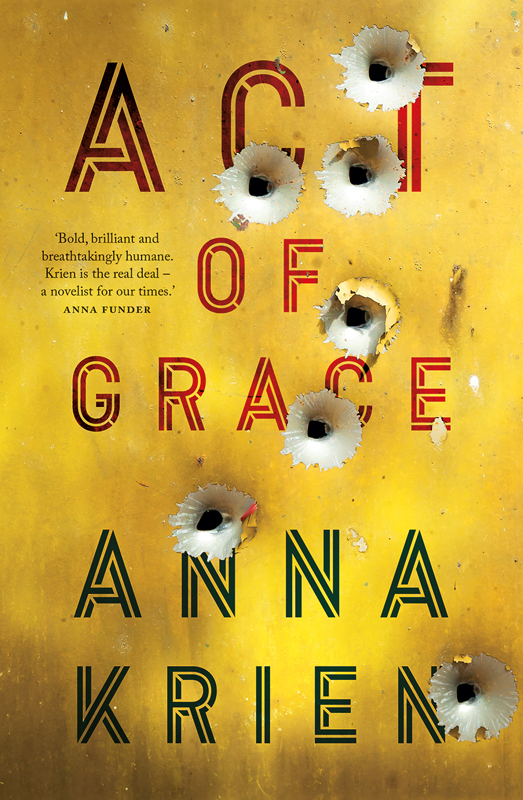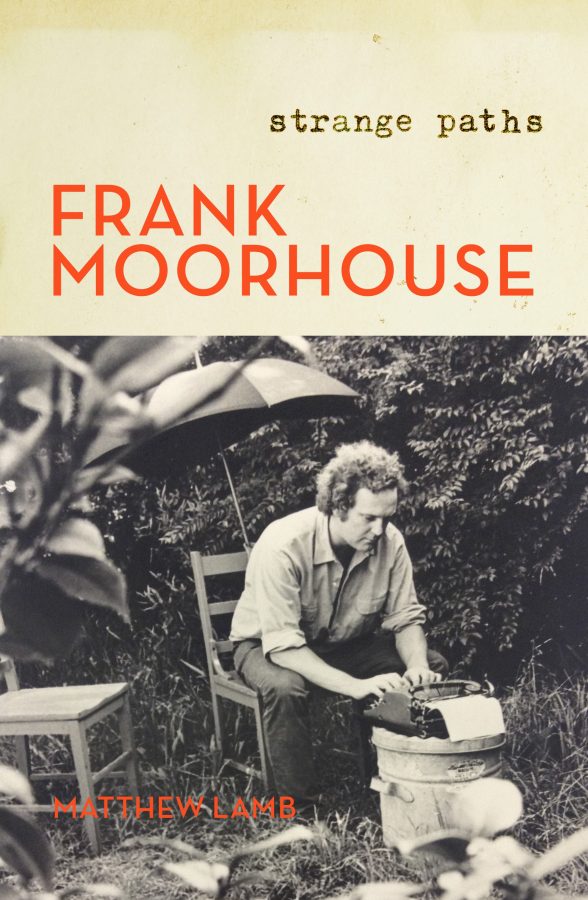The US publishing industry has been embroiled in a controversy since the publication of the much hyped novel American Dirt earlier this year. The novel by American writer Jeanine Cummins tracks the escape of a middle class Mexican woman Lydia and her son Luca from violent cartels in Acapulco to refuge across the border in the United States. The book attracted widespread criticism from Latinx and other writers, readers, migrant advocates, booksellers, and librarians for its misrepresentations and caricatures of the migrant experience.
Part of the problem, argue the critics, is that the book was marketed as the great social justice novel, as giving voice to a ‘faceless brown mass’. It was given a rare seven figure advance, and attracted a movie deal. It was blurbed by high profile authors such as Stephen King and compared to The Grapes of Wrath. Oprah Winfrey picked it for her book club. If it had been quietly published as yet another romance narco-thriller instead of a social justice classic for the Trumpian era, there would probably have been little backlash.
To make things worse, the publisher Flatiron books engaged in a series of highly questionable marketing tactics. They played up Cummin’s marriage to an undocumented immigrant as giving her unique insights into the migrant experience, without mentioning that he was an Irish immigrant. Cummins, who had previously self-identified as white, with Puerto Rican ancestry, began identifying as Latinx. At a publishing party for the book in 2019, barbed wire centerpieces were used as decorations, shockingly painful for many Latinx communities to see. The publisher has since apologised for these acts and Cummins’ US book tour was cancelled.
It bears asking why this poorly-written novel got the hype that it did, why it resonated so strongly for a white-dominated US publishing industry, and why global Western audiences are so eager to consume stories about Mexican pain and trauma. It’s worth noting that although the controversy has been mentioned in the Australian press, the mostly white cast of critics who reviewed the book here have been sympathetic to the book and dismissive of what they see as the ‘vitriolic’ attacks of its US Latinx critics such as Myriam Gurba.
Writing in the Good Weekend, Nicole Abadee encourages readers to read the book despite the criticisms by ‘Latin American’ authors, because she doesn’t believe writers should detail only their first hand experiences. In the Sydney Morning Herald, Melanie Kembrey lauds Cummins for her ‘years of research’ and provides a sympathetic portrait of the struggles Cummins went through in writing the book. The failure to engage with the concerns of her critics, or to even acknowledge their own blindspots as white reviewers, is illustrative of a broader absence of critical engagement by Australian literary critics when it comes to issues of race and cultural appropriation.
We can find parallels between American Dirt and an Australian novel published by a smaller press – Black Inc – that has similar pretensions to being a big social justice novel. Anna Krien’s Act of Grace was published with euphoric cover blurbs and greeted with a run of glowing reviews in major Australian newspapers. So far it has been short and long-listed for three major literary awards. The novel, which tells the stories of a white war vet, a young Aboriginal woman, and an Iraqi refugee, among various other non-white characters, tackles issues of Islamophobia, the brutalities of the Iraqi regime, post-traumatic stress disorder, the Stolen Generation, Aboriginal suicide, the Dakota Access Pipeline protests, tourism at Uluru, domestic violence, and dementia. The white standpoint of the writer, her appropriation of the stories and voices of non-white characters, have mostly gone unacknowledged in this literary reception.
First Nations writers have been at the forefront of critiques of cultural appropriation in Australia. Jeanine Leane, Alexis Wright, and Larissa Behrendt among others have shown how settler literature has misrepresented Aboriginal people, usurping Aboriginal stories and experiences with injurious effects for First Nations communities. Act of Grace is no exception.
From the publication and marketing of both of these books, it appears that some in the publishing industry have chosen this particularly fraught time to amplify white voices telling the stories of non-white people. In an era of rising bigotry and anti-migrant hysteria spurred by right-wing governments, why has the Great White Novel become the publishing industry’s answer to hate?
The main character of American Dirt is Lydia; in the words of the author she is a ‘sensible, bookstore-owning, devoted mother-and-wife’ in the Mexican town of Acapulco. Lydia’s husband Sebastián is a journalist who writes an exposé about La Lechuza, the leader of the cartel Los Jardineros. La Lechuza is known to Lydia as Javier, a debonair and charming customer who visits the bookstore and shares her love of books. The exposé is published, and at a family party Javier’s men gun down Sebastián, Lydia’s mother, and her entire extended family, leaving only Lydia and her son Luca alive and on the run. The novel follows Lydia and Luca as they are smuggled to Mexico City and then make their way north in a precarious journey on the freight trains known as La Bestia, with Javier hot on their heels.
Cummins has taken great pains to make the main character Lydia accessible, ordinary, and relatable to a Western reader; in fact, she is just like the middle class white woman who is imagined as the main reader for this book. Lydia reads English language novels by Leah Hager Cohen and Sebastian Barry, donates money to ‘good’ causes, and steams milk for her morning coffee. Never mind that this makes her completely unrecognisable to Latin American migrants as someone who would ride La Bestia and cross the border on foot. Most of the migrants forced to travel in this way are poor, working class, and Indigenous migrants from Central American countries, not middle class Mexicans. But Cummins achieves the goal of creating a connection with the Western reader, making them recognise themselves in Lydia and therefore caring about her struggle to escape violence and look for safety.
In a similar way, Lydia’s husband Sebastián is an outstanding and brave citizen, willing to expose the cartels regardless of personal harm to himself or his family. Eight-year-old Luca is also presented as a remarkable child. He is a geography whizkid who knows the meaning of proprietary and viscous. Lydia and Luca have impeccable moral empathy. During the journey, Luca wants to use their last remaining funds to pay the ransom for two fellow travellers who have been kidnapped. At a migrant safe house, Lydia condemns the bigotry of two Guatemalan women towards an Indigenous woman, with a tone of moral superiority that whiffs of white saviourism. (This is one of the places where the author’s entitlement comes transparently through Lydia.)
The lesson is that Lydia and Luca are worth saving because they are human beings, ‘just like us’. Cummins has stated in interviews and in her author’s note that her altruistic reason for writing the book was to restore humanity to migrants crossing the southern border. She has been strongly criticised for this by migrants themselves who say that they have always been humans and didn’t need her to make them so. In Cummins’ approach, making migrants into humans means making them into people that fit white Western notions of who is considered a deserving and empathetic subject.
The reason why Cummins’ approach had such appeal among major publishing houses (there was a three-day bidding war between nine publishing houses to buy the novel) has partly to do with the resonance of the ‘good immigrant’ stereotype in US society. As I discuss in my book Curated Stories, since the 1990s, immigration reform advocates have tried to present high achieving and exceptional migrants as the face of the immigrant rights movement in order to appeal to mainstream US society. Undocumented students – Dreamers – who were valedictorians of their school and who had assimilated into American culture, were presented as the good, deserving immigrant. The writing and promotion of American Dirt follows this same logic, that we can get people to care about the border crisis if we show the victims as good and deserving people, who are ‘just like us’ at heart.
The problem with this strategy is that rather than seeing all migrants as worthy of inclusion and acceptance, there is a hierarchy created between those worthy migrants who are humanised and recognisable due to their exceptional achievements and ability to assimilate, and those who are stigmatised and excluded as anonymous, foreign, and lower-class. Good migrants need to perform continually their exceptionality as model Americans in order to distinguish themselves from other unworthy, bad migrants. What does it mean that most migrants crossing the southern border – who are variously caged, hunted down by border patrol and vigilantes, separated from their children under the Trump administration – are not like Lydia and Luca? It makes them essentially unworthy and hence deportable.
The good and noble characters in the novel are set against the bad guys – mostly the narcos like Javier and his cartel, who are described variously as ‘bad men’, ‘monsters’ and ‘evil’. One of the bad guys is Lorenzo, a former narco who is now also supposedly on the run from Los Jardineros. Cummins traces Lorenzo’s problems back to his bad upbringing. At one point he confronts Lydia: ‘Not everybody has a mami like you, all right? Some mothers don’t give a shit.’ In contrast to the good mother stereotype that Lydia represents, the mother who will go to desperate ends to save her son, there is the bad mother who doesn’t care about her children. The characters in American Dirt operate as stand-ins for simplistic views about morality, gender, and culture.
The central narrative of the novel, about fleeing a violent and brutal country for the safe refuge of the US, resonates strongly with the prevalent bipartisan political discourse about migration. In a recent article, the New York Times editorial board stated that, ‘[b]asket-case governments in several nations south of the Rio Grande have sent a historic flood of migrants to our southern border’. President Donald Trump has referred to Mexicans as ‘rapists,’ ‘robbers’ and ‘bad hombres.’ Cummins’ descriptions of Mexico in the novel draw from this same repertoire. Mexico is described as a ‘brutal, blood-stained place’, the site of carnage, a place run by cartels with their pageants of blood.
By contrast, the United States, ‘el norte,’ is depicted as a haven of peace and harmony. While trying to board La Bestia, Lydia and Luca meet two Honduran sisters, Soledad and Rebeca, who are escaping from gangs, and the sisters join them on their journey. Soledad and Rebeca think they can make a life in the US that is ‘good and golden’. Lydia sees the US as the only place where Javier cannot reach her, where there is no impunity for violent men. While this may in fact be the way some migrants view the United States, Cummins does not complicate this perception or offer the opposing realities of racism, poverty, and state violence, nor does she consider the reach of cartels from one side of the border to the other. Rather, she dramatises the emotion of the characters when they see the USA sign and then ‘the red and white stripes, the blue starfield of the American flag’. The landscape figuratively stretches out its arms in welcome. But this is not America, or how migrants view America. It is the fantasy of how Cummins would like the world to view America.
What this happy fantasy omits is the role of US intervention abroad: sponsored coups and contra wars that depose democratically elected governments, and unequal free trade policies that factor into the poverty of Latin American nations and the rise of cartels. The reader can feel comfortable about the US being a benefactor nation that welcomes migrants from their basket-case governments, without confronting the reality of how their own governments’ policies have destabilised the region in the first place. The real problem with thinking of American Dirt as a social justice novel, one that can change hearts and minds, is that its simplistic conflict between evil cartels and noble victims does nothing to challenge the structures of US imperial power that underlie the migration crisis.
Unlike American Dirt, the protagonists in Krien’s novel Act of Grace are not noble good victims. Most of them are angry, violent, and even deceitful. Krien takes the title from an actual Australian government policy of compensating Iraqi civilians who suffered harm due to the actions of the Australian military in the Iraq war. Unlike Cummins, Krien is highly critical of her own government’s involvement in interventionist wars. The novel explores themes of trauma, war, protest, the scars of conflict, and the effects of toxic masculinity in both white Australian and non-white cultures. Krien’s background is as a journalist, and her previous writing has covered topics such as coal mining, climate change, Indigenous binge-drinking, and rape culture in sports. Act of Grace is her debut novel.
The novel traces the intertwining stories of four central characters. Nasim is an aspiring Iraqi pianist who is persecuted under the regime of Saddam Hussein and must escape to safety in Australia. Toohey is a white Australian war vet who is adjusting back to life with his family after serving in the military in Iraq. The young Aboriginal woman Robbie navigates familial relationships as her father Danny suffers early onset dementia. Over the course of the novel, Nasim and Robbie develop a friendship, though Nasim holds onto a secret. Toohey’s son Gerry must come to terms with his fraught relationship with his father.
Despite important differences, Act of Grace still has much in common with American Dirt. Like the cartels in American Dirt, there are heavily violent portrayals of the patriarchal and brutal regime of Saddam Hussein in Iraq. The Iraqi men in the novel, such as Hussein and his son Uday, are depicted as stereotypical oriental despots and Arab patriarchs. One of the Iraqi characters, Salima, runs a brothel known as Nostalgia. The brothel, with its girls dressed in embroidered gowns and veils, feels uncomfortably close to a modern-day harem: that orientalist fantasy conjured by European artists and explorers of the nineteenth century to sate their own sexual fantasies about eroticised veiled women. Stereotypes about Arab culture are carried over to the Australian context, where ‘Aussie Arab girls’ live ‘under the watchful eyes of their fathers and brothers’. When Nasim worries that ‘her kind’ would come to Australia and ‘bring their ancient feuds’, she sounds not like a refugee but a far-right talk show host.
American Dirt has been criticized as an outsider’s view of Mexico and Act of Grace feels the same way in its exoticisation of Iraqi culture, Aboriginal culture and the various other cultures (African-American, Native American) inhabited by the author. As the literary critic Edward Said has argued, the exotic is a product of representational systems of colonialism and imperialism. Representations of the Orient in art and literature do not correspond to the reality of non-Western cultures. Rather, they produce a spectacle of the exotic Other with European consciousness at its centre, for the consumption of the European observer. This spectacle generates a perverse curiosity in the culturally distant place and subject, while the voyeurism of the Western gaze remains hidden.
This tendency to fetishise the exotic Other appears frequently in the novels. Reviewers have pointed to the excited fascination of American Dirt with gradients of brown skin, from ‘berry-brown’ to ‘tan as childhood’, and hugging the ‘soft brown curve’ of a sister’s skin. Act of Grace goes even further, with lengthy descriptions of brown skin that are rarely used in the same way to describe the skin of white characters. Two Aboriginal girls, glistening with seawater ‘both shone brown’. An Anangu man in Uluru is ‘kelp, brown but seemingly lit orange from within’. Krien tells us that after Danny is struck with dementia, he actually becomes ‘blacker’. He turns ‘molasses brown’, while Robbie too notices the skin around her own eyes ‘becoming even duskier’. The Aboriginal characters in the novel label themselves in terms of blood quantums: Danny says he is ‘Half-Aborigine’, his sister Beverley says he is half, maybe a third Scot.
Towards the end, an African American character Elliott is introduced, which gives rise to peculiar and excessive descriptions of his dreadlocks: ‘wild Medusa hair writhed like a dozen coral-banded snakes, dreadlocks threaded with white and red clay beads’. And later, his ‘dreadlocks like springs’. The Native American characters sound like they are out of a Disney cartoon, all of them with ‘sleek black hair’, and the Navajo character Amos with his ‘new moon eyes’. Elliott and Amos are probably the most flimsy characters in the novel. Amos speaks in Australian slang (‘heaps of workers’), and engages in ‘healing sessions’ and ‘smoking ceremonies’ with his elders and old friends at Standing Rock, though it is never mentioned that the people of the Standing Rock Reservation are Lakota. He speaks to them in ‘dialect’, though the languages of Native American nations are fully fledged languages and not dialects.
The non-white characters in Act of Grace are less fully fleshed characters and more props for the delivery of the author’s viewpoints and for the white characters to be educated and realise their own humanity. Nasim makes such white feminist statements as ‘With the abaya, there is no self, no individual’. Elliott educates Gerry on the history of racism in the American west and Amos schools him on the land stolen from Native American people. Robbie sometimes speaks in documentary sentences, noting that ‘More than 20,000 Aborigines were killed in Australia’s frontier wars’. They read like mouthpieces rather than real people.
Throughout the novel, Krien shows how Gerry has suffered from the toxic masculinity and violence of his father. It is through his encounters with Elliott and Amos, and his participation in the Dakota Access Pipeline protests, that Gerry learns to counter his racist upbringing. The degree to which the characters of colour are simply tools in Gerry’s political awakening can be seen when the queer Elliott and the straight Gerry are under public scrunity at a railway station, Elliott with his mascara and powdered eyes and Gerry in cowboy boots. In front of the onlookers, Gerry feels a burst of bravery and pulls Elliott to him and kisses him on the lips. The characters approve. ‘We brought him up good’, says Elliott. Gerry is the hero of the story, countering his homophobic upbringing with the (queer) characters of colour there to enable and cheer him on.
The Islamophobia of Toohey comes in crudely rendered and crass bursts of anti-Muslim diatribes. It feels horrible, partly because it is so predictable and obvious, like the contrived debate between Toohey and his feminist sister-in-law Bron about the veiling of Muslim women. The anger of the other non-white characters is also relentless and feels like the opposite extreme to the good noble victims of American Dirt. Robbie is angry and wild: in one scene, she throws a paperweight at her mother and in another wants to kick her boyfriend’s mother. Danny is described as a big, angry Aboriginal man, ‘towering over the table’. The Aboriginal teenagers at Uluru are ‘full of fuck you’. Amos is a firecracker, who speaks with a ‘poisonous’ tone. But it is the white characters in the novel who help the Indigenous characters to calm down and moderate their volatile emotions. Robbie’s white mother Claire tells her that her anger will eat her up the same way it did to her father. When Gerry sees Amos getting fired up in an encounter with a racist cop at Standing Rock, he puts a hand on Amos’ shoulder and makes him smile.
During the novel the characters put on costumes, literally inhabiting the identities of others. Consider, for example, when visiting the old training base, Toohey’s wife Jean puts on an Arabic headress made of silver, with coins and bells. Or: Nasim takes on the identity of Sabeen, a young mother who was killed with her baby during the war, in order to qualify for refugee status to Australia. Or: as an experiment, Robbie wears Nasim’s abaya to work one day. Robbie is disturbed by the ‘hostility’, the ‘visceral hate’ she encounters while wearing the abaya, which makes her feel even more loathed than a fat person. It seems unbelievable that an Aboriginal woman like Robbie would not know the experience of racism outside of wearing an abaya and going out in public.
The notion of stepping into the costume of another character, taking on their identity, is Krien’s ironic statement on her own inhabiting of these characters. Yet what she is doing here is not so much inhabiting their characters as ventriloquism. She is using these characters as props, while really just projecting her own worldviews and assumptions through them. This is especially problematic when, for instance, Elliott uses the N-word, something highly offensive for a white person to do given the ugly history of that word. It doesn’t make it okay that Elliott is black. We do sense that behind this paper-thin character is a white author.
The first question in the Book Club notes for Act of Grace provided by Black Inc asks the reader what they think about Krien inhabiting characters from other cultures in light of debates about cultural appropriation. Like Flatiron highlighting Cummins’ Puerto Rican grandmother and formerly undocumented husband, Black Inc perhaps anticipated some controversy on this issue. The debate was heightened in the Australian context in 2016 when American writer Lionel Shriver gave a keynote at the Brisbane Writer’s Festival, arguing that white people have the right to write fiction from the perspective of people of other cultural backgrounds. In an interview about her novel, Krien concurred with Shriver’s opinion, saying that these things need to be written about, with the caveat that they must be written about well.
Shortly after Shriver made her comments at the Brisbane Writer’s Festival and then went on to argue for fiction as a ‘vital vehicle of empathy’, First Nations writers responded. In her article ‘Other People’s Stories’, Jeanine Leane argued that empathy requires a deep knowledge of those you want to represent. This is not based simply in limited observation or other people’s research, but social and cultural immersion in that community. Like several of the critics of American Dirt did later, Leane turned the questions back to the outsider writer: ‘Why do you want to write Aboriginal characters? Do you know any Aboriginal people? And if so, how? Have you read any of our books?’ Without this knowledge, attempts at representation turn into cultural appropriation. For Alexis Wright, in the backdrop of these debates was the reality of how the public stories told about or on behalf of Aboriginal people have long upheld the historical lies about this country, keeping in place the racism that supports these lies.
In the context of the US, American Dirt critics were concerned about the ways that white voices, even those writing about non-white experiences, are often elevated above writers of colour writing about their own communities. The Mexican-American author Luis Alberto Urrea who Cummins lists as inspiration for American Dirt (some have even noted her use of carefully reworked scenes from his books), took ten years before he could find a publisher interested in his novels. Findings from the second Diversity Baseline Survey, reported earlier this year, show that Latinx authors make up only 6 per cent of the industry in the US, while the first Diversity Baseline Survey, conducted in 2015, showed that 79 per cent of employees identified as white. Of the 82 books in Oprah’s Book Club, only one was by a US-based Latinx author.
This has also been the case in Australia, with the stories of First Nations people being told by white settlers ever since the invasion of the country in the late eighteenth century, although Leane says that in recent years the flourishing of Aboriginal storytelling has powerfully challenged the assumed privilege of whites to represent non-whites. First Nations writers, especially women, have established an important presence within the literary world. The foremost prize for fiction, the Miles Franklin Award, was won by Melissa Lucashenko in 2019. Tara June Winch’s novel The Yield won three prizes at the 2020 NSW Premier’s Literary Awards, including Book of the Year and is longlisted for the 2020 Miles Franklin, alongside Act of Grace. Arguably, the most important contemporary Australian novelist is Alexis Wright.
But in both the US and Australia, the publishing industry apparatus remains predominantly white. First Nations writers and writers of colour make up a small proportion of those who are published and promoted, and they are a small proportion of reviewers and editors, and those who sit on awards committees. In May of this year, writers of colour in Sydney were incensed when a major grant from the Sydney Morning Herald intended to stimulate emerging arts criticism went to five white culture critics. In the historical context of a systemic erasure of non-white communities, stereotypical and poorly imagined portrayals of those communities simply reinforce existing prejudices. And when these poorly imagined books pass through a vetting process that consists of mostly white editors, blurbers, and reviewers, their harmful misrepresentations can slip through the gaps.
Why does the publishing industry elevate white writers over #ownvoices writers when it comes to the experiences of communities of colour? It happens because books like American Dirt and Act of Grace fit comfortably with mainstream stereotypes, they don’t challenge white and Western readers to think and see First Nations people and people of colour in their depth and complexity. It happens because the sensationalist depiction of brutal violence and trauma in the Great White Novel sells. Both American Dirt and Act of Grace have plenty of stomach-turning scenes of gratuitous violence, rapes, and beatings. At a time when there is global concern about the plight facing refugees, migrant children being caged and separated from parents, the horrors of offshore detention and border walls, the publishing industry has peddled us these exploitative and cartoonish depictions that produce an easy empathy rather than forcing readers to reckon with their own positionality in structures of power, and the deeper problems that require action.
Can big social justice issues like the border crisis, war, dispossession, and racism be written about in ways that encourage a more complex reckoning? Several writers, especially #ownvoices writers have done so, although their books have not always received the same amplification as American Dirt and Act of Grace. These writers have not only given us more genuine and fleshed out characters who feel real but they have worked to find other, less sensationalist ways of depicting trauma. Too Much Lip, by the Aboriginal writer Melissa Lucashenko uses dark humour to explore contemporary socio-political issues of everyday racism in Australia. The Iraqi writer Ahmad Saadawi’s novel Frankenstein in Baghdad uses black humour in a tale about Hadi, a junk peddler who picks up body parts from explosions in US occupied Iraq and creates his own corpse – the ‘Frankenstein’ of the novel. Similarly, the Syrian novelist Khaled Khalifa, writing in a context of unimaginable atrocities, depicts the current war in his novel Death is Hard Work, through the journey of three siblings who carry their dead father past checkpoints, rebels, and regime soldiers to bury him near his sister. These accounts don’t hit us over the head with horror, but invite us into the quotidian realities of life under occupation and civil war, with the vernacular humour and irony of their quirky characters.
Jamil Jan Kochai’s 99 Nights in Logar, about US-occupied Afghanistan, and Mohsin Hamid’s Exit West, about refugees, swap social realism for speculative fiction and magical realism. African-American and First Nations writers have also found speculative fiction a useful tool for writing trauma, such as Colson Whitehead and Ellen Van Neerven. Others such as the Mexican-American writer Valeria Luiselli explores the US-Mexico border crisis through an experimental and lyrical novel, Lost Children’s Archive, that takes the reader on a road trip and journey through various kinds of archives. The Kurdish writer Behrouz Boochani’s book, No Friend But the Mountains, about his perilous journey to Manus Island and subsequent incarceration blends genres, incorporating poetry, reportage, and memoir. Koori writer Tony Birch has also included semi-autobiographical elements in works such as Shadowboxing. The novel Carpentaria, by Alexis Wright, a member of the Waanyi nation of the Gulf of Carpentaria, tackles trauma and loss through a storytelling lens that celebrates Aboriginal languages and spiritual practices.
The Cheyenne and Arapaho novelist Tommy Orange recently weighed in on the debate over cultural appropriation, saying that ‘My personal stance on writing fiction across racial divides is that you better have a pretty damn good reason to do it, and it better not sound even a little bit altruistic’. We don’t need white writers to act as a bridge to mainstream audiences, to translate the traumatic experiences of communities of colour into sensationalised depictions, all with the mission of shining a spotlight on social justice issues. Noongar writer Kim Scott has even suggested ‘a moratorium on non-Aboriginal writers writing on blackfella culture’. Given the woeful history of misrepresentations of First Nations peoples, all writers should heed this call. With these caveats, what we do need now more than ever are carefully nuanced, informed, and responsible works of fiction, especially by #ownvoices writers, to tell diverse stories, and a much more diversified publishing industry ready to publish them.
The crisis generated by the Covid-19 global pandemic brings the question of the structural whiteness of the publishing world into even stronger relief. In this moment, libraries and bookstores have been forced to shut down or move online, writers who depend on money from book tours and speaking engagements have lost important means of livelihood, and many workers in the publishing industry have been laid off. At this time of severe dislocation for the literary world, we cannot simply wish for things to return to the way they were, when the status quo marginalised non-white writers and subjects. Rather, we might begin to think about how to reimagine writing and publishing, based in the connections we are forging from isolation, the growing assertion of minority groups who are speaking up about deadly health disparities or their vulnerability on the frontlines, and the demands to renew funding of public sectors in health, welfare, education and the arts. First Nations and US Latinx writers have spearheaded a debate that now has the potential for far-reaching change.








